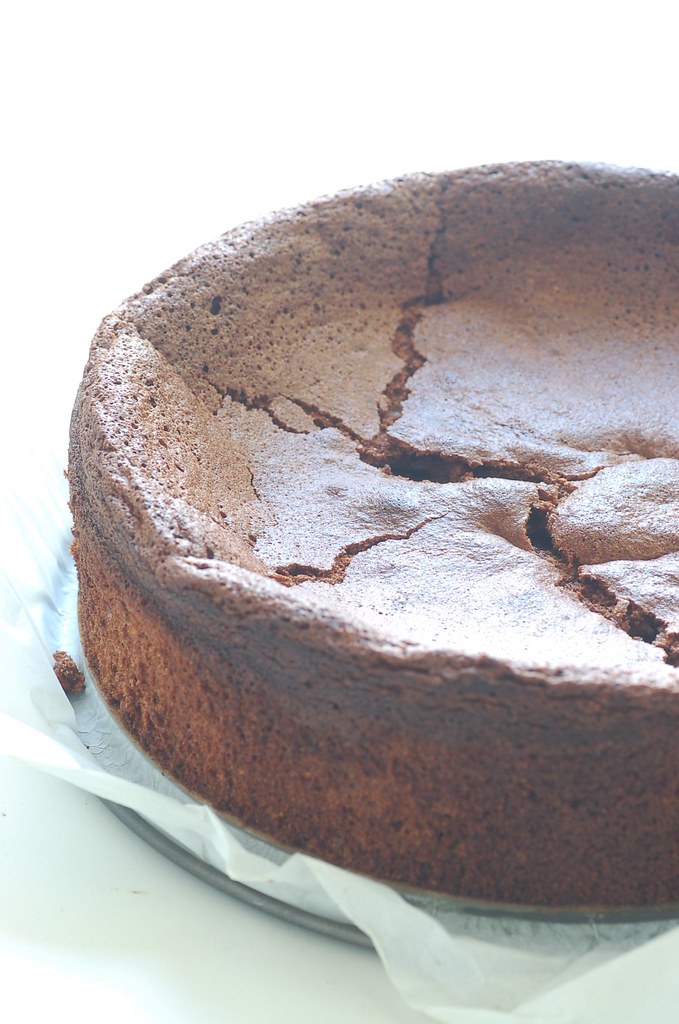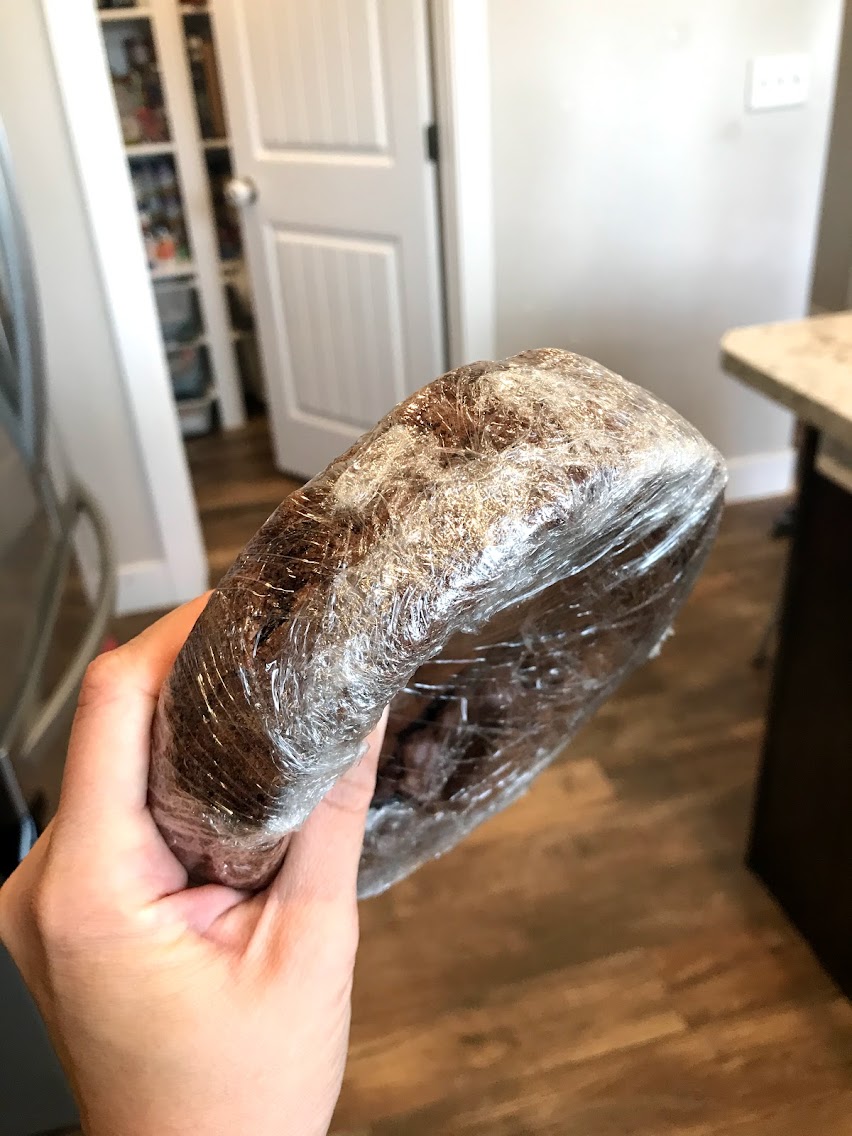Why High Altitude Affects Baking, and What To Do About It

Something we probably really never think about when moving, but is something that definitely affects our experience in the kitchen is altitude! When you live above 3,000 feet, you’re considered living in a higher altitude in the baking world. This higher elevation definitely affects your baking, and you’ll often see recipes that give you tweaks based on your altitude.
I mentioned in an article last week that I had made a brownie cake for my brother-in-law that looked delicious but totally failed! I figured I had overmixed and opened the oven too soon because the middle was completely sunken down. But when I tried the recipe a second time, being extremely careful in my measurements and mixing, I got the same result!

My sister suggested that maybe the altitude had something to do with it. After doing some research, I realized the author of the recipe is from Northern California, which is definitely a lower elevation! I’ve never really thought to research a recipe author’s origins before because many recipes I try are from local recipe bloggers, but I realize now it might not be a bad idea if you’re baking something for a special occasion!
The question is, why does higher elevation affect our baking? The short answer- the air is thinner!
Because of the thinner air, the ingredients in your baked goods don’t have nearly as much pressure on them, so they are able to rise higher than they might at a lower level. Gas expands more, and this can mean too many air pockets to create a stable cake. In addition, higher elevation usually means drier air, which means the ingredients in your batter will dry out faster- and rise.
All of this science to say that basically your baked goods will fall/sink, and the texture just won’t be what it should! Not what we’re looking for when baking a delicious cake or batch of brownies!
In general, recipes should be safe at elevations up to 3,000. But above that (and especially depending on how much higher), you’re going to want to make some adjustments! Where I live, the elevation is 4900, so I definitely need to consider adjustments when planning recipes.
Some easy things to try is increasing the temperature by 15-25 degrees and decreasing the bake time slightly. You can also reduce the dry leavening agents (baking powder, yeast) and increase the wet ingredients (oil, milk, eggs). This can help your ingredients from drying out/rising too fast and allow your cake to rise properly.
That all sounds great, but getting the exact science of it down can be a bit daunting! I found a couple charts that were super helpful in breaking down some easy fixes you can try if you’re struggling with a recipe due to high altitude.
This first one is short and sweet and comes from https://blog.thermoworks.com/thermometer/high-altitude-effects-cooking/
Cake Recipe Adjustments for High Altitude |
|||
|---|---|---|---|
Adjustment |
3,500 to 6,500 ft. (1,000-2,000 m) |
6,500 to 8,500 ft. (2,000-2,600 m) |
8,500 to 10,000 ft. (2,600-3,000 m) |
| Reduce baking powder, for each tsp., decrease: | 1/8 tsp. | 1/8-1/4 tsp. | 1/4 tsp. |
| Reduce sugar, for each cup, decrease: | 0-1 Tbsp. | 0-2 Tbsp. | 1-3 Tbsp. |
| Increase liquid, for each cup, add: | 1-2 Tbsp. | 2-4 Tbsp. | 3-4 Tbsp. |
This second one comes from Betty Crocker’s website https://www.bettycrocker.com/how-to/tipslibrary/baking-tips/baking-cooking-high-altitudes
|
BAKED FOOD |
POSSIBLE PROBLEMS |
ADJUSTMENTS TO TRY |
|
Breads, Quick |
Includes banana bread, coffee cakes, gingerbread and other quick breads. • Overexpansion during baking • Bread may partially collapse • Sticky or tacky to the touch • Dipped center |
• Decrease baking soda or baking powder (1/8 to 1/4 tsp) • Decrease sugar (1 to 2 Tbsp) • Decrease fat (2 Tbsp to 1/4 cup) • Increase water (1 to 4 Tbsp) • Increase flour (2 to 4 Tbsp) • Increase oven temperature by 15°F to 25°F |
|
Breads, Yeast |
• Overexpansion during rising time • Drier texture • Bread may have large holes throughout |
• Decrease flour and/or increase liquid until dough is soft and elastic • Allow dough to rise only until double in size (rising time may be shorter) • Punch down dough (and allow to rise) twice |
|
Bars & Brownies |
• Overbaked sides, underbaked center • Sunken center • Gummy texture • Greasy appearance or touch |
• Decrease oven temperature by 25°F • Decrease oil (1 Tbsp to 1/2 cup) • Increase flour (1 Tbsp to 1/3 cup) • Increase water (1 Tbsp to 1/3 cup) • Increase bake time (up to 10 minutes) |
|
Cake, Angel Food |
• Over-rising and spilling over pan sides • Coarse texture • Falls out of pan when cooled upside down |
• Beat egg whites only to soft-peak stage • Increase flour (1 Tbsp to 1/3 cup) • Increase water (up to 1/3 cup) • Increase oven temperature by 25°F |
|
Cakes, 13x9-Inch & Layer |
• Too dry, crumbly, pasty or dense • Sunken center • Overbaked exterior, underbaked interior • Overly moist layer at top or bottom • Cake “falls” (not enough structure) |
• Decrease oil or shortening (1 to 2 Tbsp) • Decrease baking soda or baking powder (1/8 to 1/4 tsp) • Increase liquid (1 to 4 Tbsp) or add an egg • Increase flour (1 Tbsp to 1/2 cup) • Increase bake time until doneness is achieved |
|
Cookies |
Cookies generally bake well at high altitudes. You may notice: • Cookies have a drier texture • Cookies may spread too much • Cookies may not spread enough • Cookies may overbrown • Cookies may be underdone |
• Decrease butter or shortening (2 Tbsp to 1/4 cup) if cookies spread too much • Decrease sugar slightly if cookies spread too much (amount depends on size of batch and other ingredients) • Increase liquid by 1 to 2 Tbsp only if dough is too dry and cookies don’t spread • Increase flour (starting with 1 or 2 Tbsp) if cookies spread too much • Increase bake time by 1 to 3 minutes • Decrease bake time by 1 to 2 minutes |
|
Fried Dough |
• Cooks too fast • Overcooked exterior, undercooked interior |
• Decrease cooking temperature 3°F per 1,000 feet of altitude • Increase cook time |
|
Muffins, Biscuits & Scones |
Muffins, biscuits and scones generally bake well at high altitudes. You may notice: • Drier texture • Muffins have flat tops that flow together • Overbrowning |
• Decrease baking soda or baking powder (1/8 tsp) • Decrease sugar slightly if batter is too thin and flows out of muffin cups • Increase number of muffins (because batter at high altitudes has more volume) • Increase liquid by 1 to 2 Tbsp if batter is too thick • Increase flour (starting with 1 Tbsp) if batter is too thin and flows out of muffin cups • Increase or decrease bake time by 1 to 3 minutes |
|
Pie Crust |
Pie crusts generally bake well at high altitudes. You may notice: • Drier texture when forming dough |
• Increase water slightly (starting with 1 Tbsp) until dough holds together well and is pliable |
I love how thorough this is! They also have a chart for cooking solutions, if that’s something you want to learn more about. It’s linked in the sources below!
At the end of the day, it’s worth knowing how to adjust recipes for high altitude because it can make a world of difference in your baking results!
- https://www.wheatmontana.com/content/high-altitude-baking-how-make-your-recipes-work-mountains
- https://blog.thermoworks.com/thermometer/high-altitude-effects-cooking/
- https://www.allrecipes.com/article/high-altitude-cake-baking/
- https://www.bettycrocker.com/how-to/tipslibrary/baking-tips/baking-cooking-high-altitudes
- https://www.flickr.com/photos/stone-soup/2240901789
 Camille Hoffmann
Camille Hoffmann
Monthly Newsletter Contributor since 2014
Email the author! camille@dvo.com
